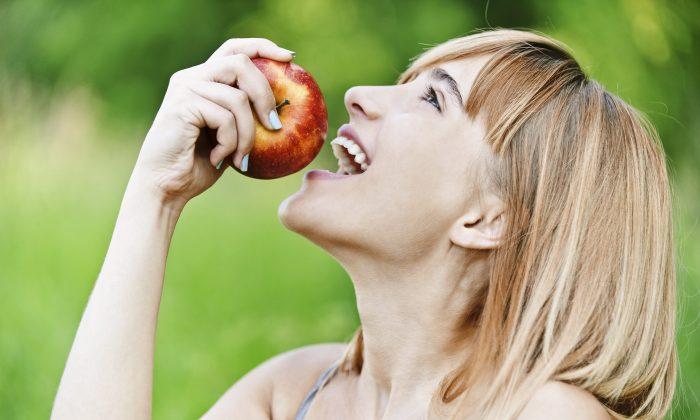Is your skin looking a little dull? You could try tricks like scrubbing your skin with exfoliants or put a higher watt bulb above the bathroom mirror to brighten your complexion. But, your skin will never fully radiate and glow like healthy, youthful-looking skin if you’re not eating well.
What Causes Dull Skin?
Our skin can be divided into three layers: epidermis, dermis, and hypodermis.The outermost layer of your skin, the epidermis, is made up of mostly dead skin cells, which can build up creating a dry, flaky, white or even yellow appearance. Dry and flaky skin also can be caused by a lack of oil and water in the skin’s second layer, the dermis. Feeding the dermis with oil, water, and other nutrients is the job of blood vessels. Certain nutrients can help your skin look more youthful, radiant, and beautiful.
Foods To Brighten Your Skin
1. Carrots
Brightening Nutrient: Vitamin AWith about 1.6 billion skin cells on your body, turning over every 28 days, your body is constantly making skin cells. Eating foods that support cell growth can help ensure your body is able to create the most beautiful skin possible. Vitamin A supports the growth of beautiful new skin cells. It plays a vital role in cell differentiation. In fact, as early as 1941, scientists highlighted the importance of eating vitamin A rich foods for healthy skin after it was discovered a lack of vitamin A in a person’s diet leads to abnormal skin growth. Carrots are a well-known source of vitamin A. Eating carrots can give your skin a sort of tanned appearance—but, be careful as too much can make your skin look orange.
2. Sesame Seeds
Brightening Nutrient: ZincStory continues below advertisement
Putting zinc cream on your face can prevent sun damage, thus it makes sense that your body puts five to six times more zinc in the skin’s epidermis than the dermis. Zinc is a great antioxidant in the outer layers of the skin and can promote wound healing. Antioxidants stop free radical damage in the skin, which disrupts new cell formation, weakens collagen strength, and causes spots. Putting zinc on your skin may be great for the beach, but not the office—try digging into zinc-rich foods like oysters, lamb, sesame seeds, and green peas and feed your skin from the inside-out.
3. Oranges
Brightening Nutrient: Vitamin CYour complexion becomes less bright as you age. Just look at the skin of older people—it’s drier, more pale and spotty. Age spots, or photoaging, are caused by sunlight eliciting an increase in pigment in certain cells of your skin (melanocytes). Preventing skin aging has never been easier—vitamin C is a potent antioxidant that fights damage caused by sunlight, and is a co-factor required for the collagen formation which gives the skin its strength. There are lots of sources of vitamin C to enjoy including oranges, raspberries, limes, and kiwis.
4. Sardines
Brightening Nutrient: Omega-3 fatty acidsIt’s well known that omega-3 fatty acids support a healthy cardiovascular system—but, did you realize that also means healthy skin cells? That healthy glow of beautiful skin comes from healthy skin cells being fed by thousands of small blood vessels. Studies have shown that omega-3 fats help the skin’s oil (sebaceous) glands, improving skin conditions like acne and psoriasis. Plus, omega-3 fatty acids are capable of mediating inflammation. By reducing the amount of inflammation, omega-3 fatty acids help reduce puffiness and redness in the skin. The best source of omega-3 fatty acids are fatty fish (sardines, salmon, tuna, mackerel, anchovies) and, for the vegans, there are seeds (like flax and chia).
5. Yogurt
Brightening Nutrient: ProbioticsRed blotches on the skin are a sign of inflammation caused by trauma (e.g. rubbing of the skin, ultraviolet light or chemical damage), allergic reaction or rosacea. Eat away inflammation. Probiotics found in yogurt are a well-known mediator of inflammation. Top yogurt with berries for extra inflammatory fighting power. For higher dosages of probiotics, try a supplement.
6. Kale
Brightening Nutrient: AntioxidantsAge spots, freckles, and moles can be sprinkled across your skin. For those of us with naturally occurring freckles, they’re a dimension of our beauty. But, when skin spots are caused by the sun, we need to act. Protect against the damaging effects of the sun on your skin by sinking your teeth into antioxidant-rich foods like brightly colored fruits and vegetables. Kale contains over 45 different antioxidant compounds called flavonoids. Not a fan of kale? Mix it in with your favorite salad lettuce, or bake up some homemade kale chips.
7. Wheat Germ
Brightening Nutrient: B vitaminsStory continues below advertisement
A million skin cells are lost each day and replaced—phew, you spend a lot of energy making skin cells. Brewer’s yeast, mushrooms, and wheat germ are packed with B vitamins, which help your cells use energy from carbohydrates, protein, and fat. Help your skin have enough energy to make its daily quota by eating foods rich in B vitamins. Never tried wheat germ before? Simply sprinkle on salads, pasta, or granola.
8. Lima Beans
Brightening nutrient: MolybdenumYou’ll need more than B vitamins to keep up with that daily quota of a million skin cells a day. A nutrient called molybdenum can help. Molybdenum helps in the synthesis of DNA, which is needed to make a new cell. Lima beans and other legumes (edamame, green peas) are a good source of molybdenum to help your skin synthesize new, beautiful, and bright cells.
Allison Tannis is a nutritional expert and author. For more details about how your skin is designed and how you can feed it to look more beautiful in Allison’s book “Feed Your Skin, Starve Your Wrinkles.” This article was first published on Naturally Savvy.com



